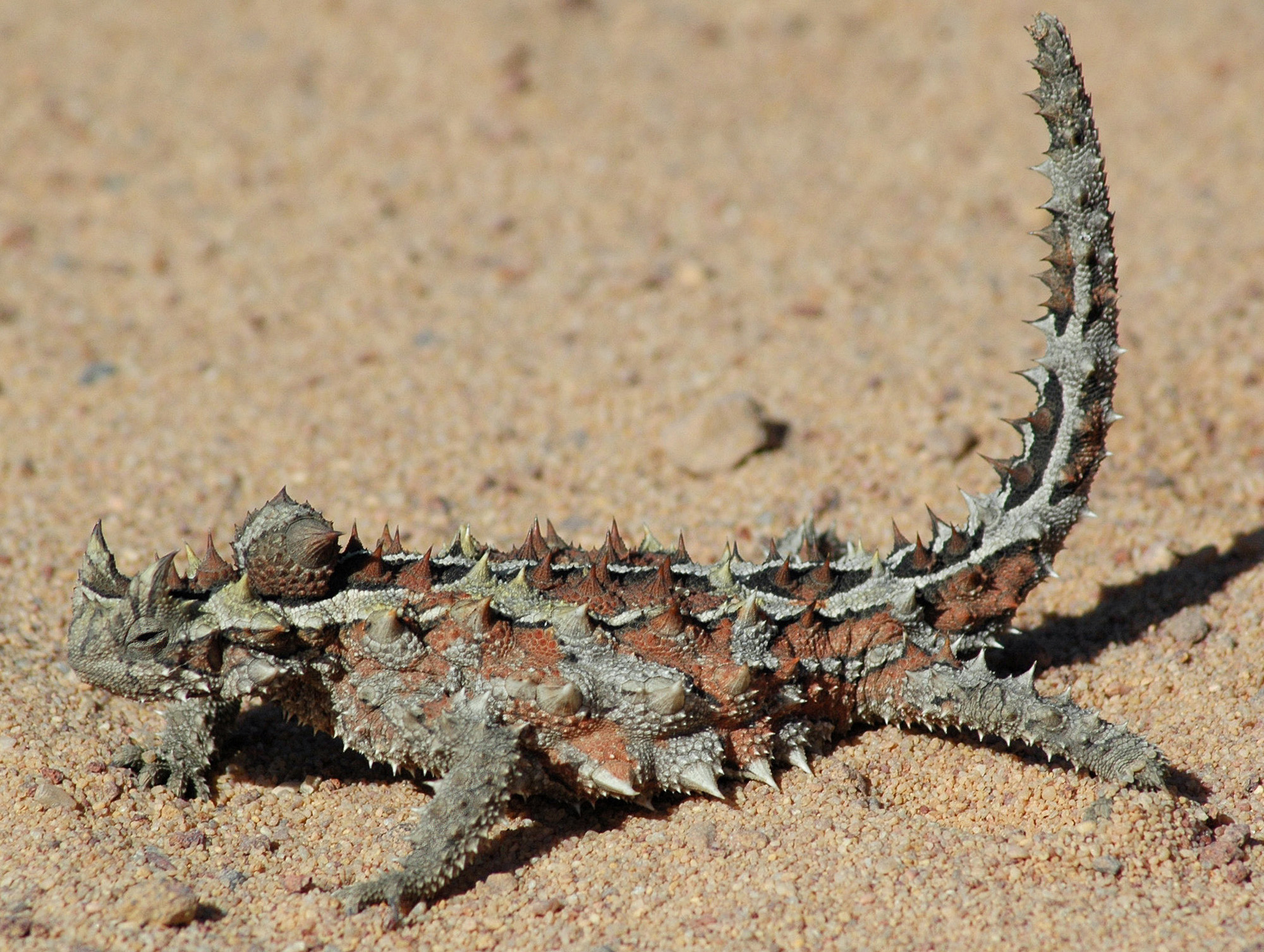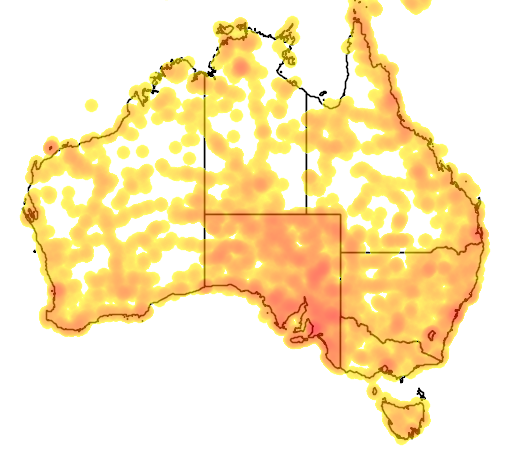|
Ochetellus
''Ochetellus'' is a genus of ants first described by Steve Shattuck in 1992. He placed it in the subfamily Dolichoderinae of the family Formicidae. The ants in this genus are small and black in colour; workers measure in length, the males at around are smaller, and the queens are the largest, reaching . There are seven described species and three described subspecies that mostly live in Australia in a wide variety of habitats, but some species are found in Asia. One species, ''Ochetellus glaber'', has been introduced into New Zealand and the United States. The colonies are found in rotten wood, in the ground, under rocks or stones and in urban areas. The ants are both diurnal and nocturnal and forage on trees, in low vegetation and into human homes, where they are regarded as pests. These ants eat a variety of foods, including fruits, insects, sucrose, nectar and bird feces. They visit various flowers and attend to a variety of butterfly larvae. The thorny devil, an Austral ... [...More Info...] [...Related Items...] OR: [Wikipedia] [Google] [Baidu] |
Ochetellus Glaber
''Ochetellus glaber'' (also known as the black household ant) is a species of ant native to Australia. A member of the genus ''Ochetellus'' in the subfamily Dolichoderinae, it was Scientific description, described by Austrian entomologist Gustav Mayr in 1862. Aside from Australia, ''O. glaber'' has been introduced to a number of countries, including China, India, Japan, New Zealand, the Philippines and the United States, where it has established itself in Hawaii and Florida. It has been found on Lord Howe Island, New Caledonia, Norfolk Island, Réunion and the Solomon Islands. Compared with other ants, ''O. glaber'' is a small species, with workers measuring . Males are the smallest at , while the queens measure . The ant's colour ranges from brown to black. Described as an Arboreal locomotion, arboreal nesting species, ''O. glaber'' lives in open or savannah woodland areas, nesting under stones, old dry logs, in hollow trees and plant stems, and rotten wood. Nest ... [...More Info...] [...Related Items...] OR: [Wikipedia] [Google] [Baidu] |
Ochetellus Vinsoni
''Ochetellus vinsoni'' is a species of ant in the genus ''Ochetellus''. Described by Donisthorpe in 1946, the species is endemic to Mauritius Mauritius ( ; french: Maurice, link=no ; mfe, label= Mauritian Creole, Moris ), officially the Republic of Mauritius, is an island nation in the Indian Ocean about off the southeast coast of the African continent, east of Madagascar. It .... References Dolichoderinae Insects described in 1946 Insects of Mauritius Hymenoptera of Africa Endemic fauna of Mauritius {{Dolichoderinae-stub ... [...More Info...] [...Related Items...] OR: [Wikipedia] [Google] [Baidu] |
Ochetellus Epinotalis
''Ochetellus epinotalis'' is a species of ant in the genus ''Ochetellus''. Described by Viehmeyer in 1914, the species is endemic to New Guinea New Guinea (; Hiri Motu: ''Niu Gini''; id, Papua, or , historically ) is the world's second-largest island with an area of . Located in Oceania in the southwestern Pacific Ocean, the island is separated from Australia by the wide Torr ....Shattuck, S. O. 1992a. Review of the dolichoderine ant genus ''Iridomyrmex'' Mayr with descriptions of three new genera (Hymenoptera: Formicidae). ''Australian Journal of Entomology Society''. 31: 13-18 (page 17, Combination in ''Ochetellus'') References Dolichoderinae Insects of New Guinea Insects described in 1914 Endemic fauna of New Guinea {{Dolichoderinae-stub ... [...More Info...] [...Related Items...] OR: [Wikipedia] [Google] [Baidu] |
Ochetellus Punctatissimus
''Ochetellus punctatissimus'' is a species of ant in the genus ''Ochetellus ''Ochetellus'' is a genus of ants first described by Steve Shattuck in 1992. He placed it in the subfamily Dolichoderinae of the family Formicidae. The ants in this genus are small and black in colour; workers measure in length, the males a ...''. Described by Emery in 1887, the ant is endemic to Australia.Shattuck, S. O. 1992a. Review of the dolichoderine ant genus ''Iridomyrmex'' Mayr with descriptions of three new genera (Hymenoptera: Formicidae). ''Journal of the Australian Entomological Society'' 31: 13-18 (page 17, Combination in ''Ochetellus'') References Dolichoderinae Hymenoptera of Australia Insects described in 1887 {{Dolichoderinae-stub ... [...More Info...] [...Related Items...] OR: [Wikipedia] [Google] [Baidu] |
Ochetellus Flavipes
''Ochetellus flavipes'', the spinifex ant, is a species of ant in the genus ''Ochetellus''. Described by William Forsell Kirby William Forsell Kirby (14 January 1844 – 20 November 1912) was an English entomologist and folklorist. Life He was born in Leicester. He was the eldest son of Samuel Kirby, who was a banker. He was educated privately, and became interested ... in 1896, the species is endemic to Australia.Kirby, W. F. 1896. Supplement to the Zoological Report. Hymenoptera. Pp. 203-209 in: Spencer, B. (ed.) Report on the work of the Horn Scientific Expedition to central Australia. Part 1. London: Dulau and Co., xviii + 220 pp. (page 206, worker described) References Dolichoderinae Hymenoptera of Australia Insects described in 1896 {{Dolichoderinae-stub ... [...More Info...] [...Related Items...] OR: [Wikipedia] [Google] [Baidu] |
Ochetellus Sororis
''Ochetellus sororis'' is a species of ant in the genus ''Ochetellus ''Ochetellus'' is a genus of ants first described by Steve Shattuck in 1992. He placed it in the subfamily Dolichoderinae of the family Formicidae. The ants in this genus are small and black in colour; workers measure in length, the males a ...''. Described by William M. Mann in 1921, the species is endemic to Fiji. References Dolichoderinae Insects described in 1921 Insects of Fiji {{Dolichoderinae-stub ... [...More Info...] [...Related Items...] OR: [Wikipedia] [Google] [Baidu] |
Ochetellus Democles
''Ochetellus democles'' is a species of ant in the genus ''Ochetellus''. Described by Francis Walker in 1839, the ant was originally thought to be a small wasp based on a male collected by Charles Darwin Charles Robert Darwin ( ; 12 February 1809 – 19 April 1882) was an English naturalist, geologist, and biologist, widely known for his contributions to evolutionary biology. His proposition that all species of life have descended .... It was first recognised as an ant in 1988.Bouček Z (1988) Australasian Chalcidoidea (Hymenoptera). A Biosystematic Revision of Genera of Fourteen Families, with a Reclassification of Species: ''CAB International''. References Dolichoderinae Insects described in 1839 Hymenoptera of Australia {{Dolichoderinae-stub ... [...More Info...] [...Related Items...] OR: [Wikipedia] [Google] [Baidu] |
Thorny Dragon
The thorny devil (''Moloch horridus''), also known Common name, commonly as the mountain devil, thorny lizard, thorny dragon, and moloch, is a species of lizard in the Family (biology), family Agamidae. The species is Endemism, endemic to Australia. It is the monotypic taxon, sole species in the genus ''Moloch''. It grows up to in total length (including tail), with females generally larger than males. Taxonomy The thorny devil was first species description, described by the biologist John Edward Gray in 1841. While it is the only species contained in the genus ''Moloch'', many taxonomists suspect another species might remain to be found in the wild. The thorny devil is only distantly related to the morphology (biology), morphologically similar North American horned lizards of the genus ''Phrynosoma''. This similarity is usually thought of as an example of convergent evolution. The names given to this lizard reflect its appearance: the two large horned scales on its head comp ... [...More Info...] [...Related Items...] OR: [Wikipedia] [Google] [Baidu] |
Iridomyrmex
''Iridomyrmex'' is a genus of ants called rainbow ants (referring to their blue-green iridescent sheen) first described by Austrian entomologist Gustav Mayr in 1862. He placed the genus in the subfamily Dolichoderinae of the family Formicidae. It has 79 described species and five fossil species. Most of these ants are native to Australia; others are found in Asia and Oceania, and they have been introduced to Brazil, New Zealand, and the United Arab Emirates. Fossil species are known from China, France, and the United States. These ants are known to be an ecologically dominant and important group of ants, but they are sometimes regarded as pests because they disturb soil and enter human houses. Farmers in rural Australia place animal carcasses on meat ant ('' I. purpureus'') mounds as a method of disposing of them; meat ants consume the carcass and reduce it to bones in a matter of weeks. Meat ants also engage in ritualised fighting, which helps prevent casualties and solve te ... [...More Info...] [...Related Items...] OR: [Wikipedia] [Google] [Baidu] |
Leptomyrmecini
Leptomyrmecini is a tribe of Dolichoderinae ants with 16 genera and two extinct genera. Genera *'' Anillidris'' Santschi, 1936 *''Anonychomyrma'' Donisthorpe, 1947 *'' Azteca'' Forel, 1878 *†'' Chronomyrmex'' McKellar, Glasier & Engel, 2013 *''Doleromyrma'' Forel, 1907 *'' Dorymyrmex'' Mayr, 1866 *''Forelius'' Emery, 1888 *''Froggattella'' Forel, 1902 *'' Gracilidris'' Wild & Cuezzo, 2006 *''Iridomyrmex'' Mayr, 1862 *'' Leptomyrmex'' Mayr, 1862 *'' Linepithema'' Mayr, 1866 *''Nebothriomyrmex'' Dubovikov, 2004 *''Ochetellus'' Shattuck, 1992 *'' Papyrius'' Shattuck, 1992 *''Philidris'' Shattuck, 1992 *''Turneria ''Turneria'' is a genus of ants that belongs to the subfamily Dolichoderinae Dolichoderinae is a subfamily of ants, which includes species such as the Argentine ant (''Linepithema humile''), the erratic ant, the odorous house ant, and th ...'' Forel, 1895 References Dolichoderinae Ant tribes {{Dolichoderinae-stub ... [...More Info...] [...Related Items...] OR: [Wikipedia] [Google] [Baidu] |
Dolichoderinae
Dolichoderinae is a subfamily of ants, which includes species such as the Argentine ant (''Linepithema humile''), the erratic ant, the odorous house ant, and the cone ant. The subfamily presents a great diversity of species throughout the world, distributed in different biogeographic realms, from the Palearctic, Nearctic, Afrotropical region and Malaysia, to the Middle East, Australian, and Neotropical regions. This subfamily is distinguished by having a single petiole (no post-petiole) and a slit-like orifice, from which chemical compounds are released. Dolichoderine ants do not possess a sting, unlike ants in some other subfamilies, such as Ponerinae and Myrmicinae, instead relying on the chemical defensive compounds produced from the anal gland. Of the compounds produced by dolichoderine ants, several terpenoids were identified including the previously unknown iridomyrmecin, isoiridomyrmecin, and iridodial. Such compounds are responsible for the smell given off by ants of ... [...More Info...] [...Related Items...] OR: [Wikipedia] [Google] [Baidu] |
Asia
Asia (, ) is one of the world's most notable geographical regions, which is either considered a continent in its own right or a subcontinent of Eurasia, which shares the continental landmass of Afro-Eurasia with Africa. Asia covers an area of , about 30% of Earth's total land area and 8.7% of Earth's total surface area. The continent, which has long been home to the majority of the human population, was the site of many of the first civilizations. Its 4.7 billion people constitute roughly 60% of the world's population. In general terms, Asia is bounded on the east by the Pacific Ocean, on the south by the Indian Ocean, and on the north by the Arctic Ocean. The border of Asia with Europe is a historical and cultural construct, as there is no clear physical and geographical separation between them. It is somewhat arbitrary and has moved since its first conception in classical antiquity. The division of Eurasia into two continents reflects East–West cultural, linguistic, ... [...More Info...] [...Related Items...] OR: [Wikipedia] [Google] [Baidu] |






